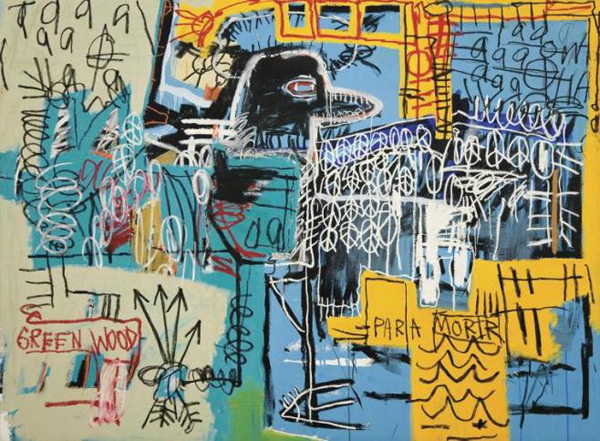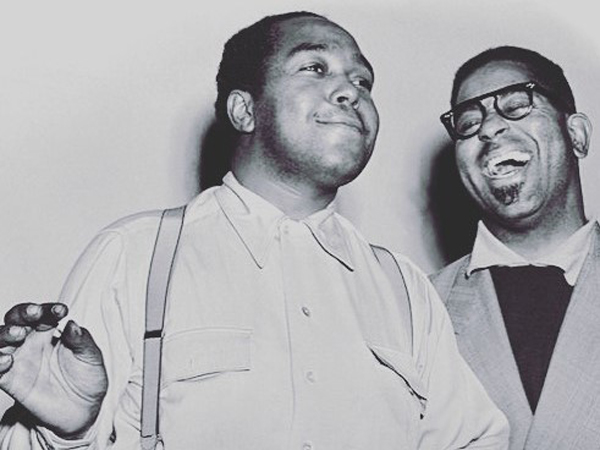Can a single person be a cultural revolution?
By that, I mean one whose impact on culture was and is so significant that they influenced all culture immediately around them and concentrically by exponents through the world of art. Like a pebble that causes circles to emanate outward from the point where it breaks the quiet of still water in a pond, Charlie Parker’s brilliance affected all who were exposed to him.
Parker’s music influenced writers, poets, painters and recording artists working in a multitude of genres. It stemmed from his fearlessness. It’s a trait often used to describe artists who blazed trails and went on to have tremendous influence on others. Noisy, flashy and audacious, he embodied the essence of jazz like few others have.
This year on Aug. 29, it was the 100th anniversary of the birth of Charlie Parker. The centennial celebrations have been dynamic, with a plethora of newly released music and media.
Verve and UMe will release Bird in LA, a collection of unreleased songs recorded when Parker was in Los Angeles between the mid ’40s and early ’50s. Blue Note’s special Record Store Day release of Jazz at Midnite features two performances at the Howard Theatre in Washington, D.C., in 1952 and 1953. Verve and Universal have produced a box set called Charlie Parker: The 10” Albums Collection, compiling Parker’s five 10-inch albums for Clef Records, and Craft Recordings will release a CD edition of the previously vinyl-only Charlie Parker Savoy 10” Album Collection.
“Charlie Parker is one of the enduring icons of Verve Records,” says Jamie Krents, EVP of Verve/Impulse! “He is a peerless artist and his legacy is far-reaching. We are proud to celebrate his centennial with many different initiatives … so that everyone can be reminded of the greatness of Bird.”
A graphic novel to be published by Z2 Comics called Chasin’ the Bird: Charlie Parker in California tells the story of Parker and Dizzy Gillespie bringing the bebop sound to Los Angeles in 1945. Also this year, Hal Leonard will publish a deluxe hardcover edition of Charlie Parker: The Complete Scores, featuring 40 quintet transcriptions.
Collections are what the celebration is all about. Compiling, restoring, and releasing, all to feed the iconic energy of Parker’s greatness.
“The centennial of Charlie Parker is a once-in-a-lifetime opportunity to celebrate his life, legacy and art form with the world,” says Jeff Jampol, the manager of Parker’s estate. “We are thrilled to honour Bird’s transformative musical impact on past, present and future generations.”
Parker was one of the most significant figures in jazz history, its music and its culture. His significance is exponential. The influence, importance, and place in history are limitless.
Charles Christopher Parker Jr. was born in Kansas City, Ks., on Aug. 29, 1920. His father Charles was African-American and his mother Addie was of Choctaw and African-American heritage. When he was seven years old, the family moved to Kansas City, Mo., a hotbed of jazz, blues and gospel.
While in public school, Parker took music lessons and played the baritone horn in his school’s band. As the story goes, Parker’s mother gave him an alto saxophone when he was 15, not long before his father had abandoned the family. In his teens, he was playing in local clubs and ended up dropping out of school in 1935 with his sights set on a full-time career in music. From 1935 to 1938, he played in Buster Smith’s band and in Jay McShann’s band in 1938. He toured with the latter in New York and Chicago. He stayed in New York for a while, jamming and playing in clubs, and then landed back in Chicago. He soon returned to New York.
Life was rough. Parker washed dishes to support himself. In New York, he met Biddy Fleet, a guitar player. The experience with Fleet was the beginning of what became part of the signature Parker artistry. He learned and developed his improvisational technique, which involved playing higher intervals of chord changes.
That improvisational skill would go on to be a major part of his legacy, with a unique sheen and respectability. It was a beast that made many witnesses freeze in awe, and spurred others to emulate, adopt, mimic and worship. He mastered harmony and chord changes — the academics of jazz — and then took every liberty as he freely explored in real time its many possibilities. He pushed the boundaries of improvisation while still working within confines of musical rules and traditions held in high regard and importance.
It wasn’t just what he played, but how he played it.
Parker’s father’s death took him back to Missouri for the funeral. In Missouri, he played with Harlan Leonard and his Rockets. When he returned to New York, he reconnected with McShann’s band and recorded with them in 1940. Parker stayed with the group for four years, and it was while with them that he took on the nickname “Bird,” thanks to his taste for chicken; McShann once told a story of the time he hit a “yardbird” with his car, and Parker brought it home, cooked it and ate it all in one sitting.
By 1945, Parker was leading his own group and performing with Dizzy Gillespie. The two of them did a six-week nightclub tour in Hollywood. It was at this time that they developed bop, also known as bebop. By 1947, he was back in New York and had formed a quintet there.
From 1947 to 1951, Parker was performing in a variety of groups and as a solo artist. He saw a period of signings with different labels during this time, including Dial, Savoy and Mercury.
In 1949 and the early 1950s, Parker toured in Europe, including his 1949 debut at the Paris International Jazz Festival. Back in the U.S. that same year, the Birdland Club in New York was named in his honour. Bird performed there a week before he died in 1955.
Parker struggled with addiction to heroin and alcohol and suffered with mental illness at a time when there was little public awareness of mental health challenges. He was hospitalized after suffering a nervous breakdown in Los Angeles in 1946. His illness and battle with addiction ravaged his relationships and interfered often with his career. There were multiple marriages and affairs all disturbed by his battles with drugs and his mental health. After a 1951 arrest, he had his cabaret card taken away, his reputation was tarnished, and he could no longer perform in New York. He nearly died by suicide twice in 1954. The next year, Parker suffered an ulcer attack while visiting Baroness Pannonica de Koenigswarter. He refused to go to the hospital and died in her suite at the Stanhope Hotel in New York on March 12, 1955. The official causes were lobar pneumonia and a bleeding ulcer, but the underlying cause was recognized as an advanced case of cirrhosis due to the effects of years of long-term substance abuse. He was just 34 when he died.
“Few artists have made such an impact on the music of an era as Charlie Parker did in shaping the sounds of the 20th century,” says Bruce Resnikoff, president and CEO of UMe.
Parker created his art at a pace and level that astounds. Among artists, this element has sometimes been seen as madness or instability, or as rebellious nonconformity with a disregard for the status quo. It is the very noncompliance and daring that makes the genius stand out.
But the fragile mind of the genius is sadly too often the most exploited. Those living in the places surrounding the artist push for more, expect more, assume what they think is going on and what the artist is about and is doing. The fragility may lead to challenges in trying to compensate, and to compromise with more common notions of how life and culture should be.
Through all his struggles, Parker managed to amass a staggering legacy of artistry, one that continues to amaze the jazz world, his fans, and artists of all disciplines. The influence and impact is massive, brilliant and permanent. One hundred years after his birth, we remain in utter amazement of his artistry.


